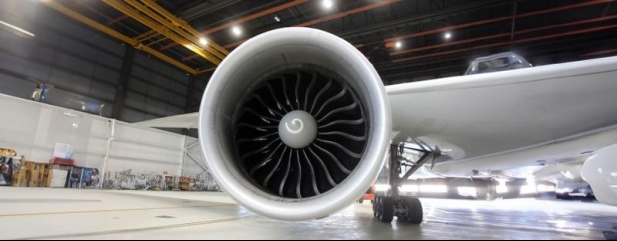Archived article
Please note that tax, investment, pension and ISA rules can change and the information and any views contained in this article may now be inaccurate.
Investors bet on Rolls-Royce recovery after engine trouble sparks sharp sell-off

Aeronautical engineer Rolls-Royce (RR.) is not going to be caught up in a new crisis after airline Cathay Pacific (0293:HKG) found a fault with the engines used ’on its fleet of Airbus (AIR:EPA) A350 jets.
This was the prevailing mood among investors and analysts as the dust settled on a late afternoon trading session on 2 September following reports that a Rolls-Royce component failure led Cathay Pacific to cancel dozens of flights and ground A350 aircraft.
Rolls-Royce shares plunged more than 6.5% as news first emerged, before bouncing back strongly in early trading the following day 3 September.
The issue was discovered during a Cathay Pacific flight from Hong Kong to Zurich, leading to a widespread inspection of its A350 fleet. The inspections revealed similar problems in other engines, requiring component replacements.
Another serious problem with plane engines could throw Rolls-Royce’s recovery efforts into doubt. ‘A lot of people will remember the company’s previous crisis involving its Trent 1000 engines, which damaged the British engineer’s reputation and led to significant extra costs,’ said Russ Mould, investment director at AJ Bell.
Drawing parallels to past challenges faced by Rolls-Royce, particularly the Trent 1000 issues, Jefferies analysts note that those were far more complex and costly.
‘The Trent 1000 issues at Rolls-Royce led to circa £2.4 billion of excess cash costs over 2017 to 2022, with IPC, IPT and HPT blades affected across different subset of the Trent 1000 fleet,’ the analysts said.
In contrast, the current issue with the Trent XWB-97 appears to be more contained and less likely to lead to such extensive costs. Reuters reported that the affected parts are thought to be fuel nozzles, which are easier to reach and examine than more crucial components like blades.
Jefferies estimates that the market’s reaction, which led to a £2.7 billion loss in market cap, is pricing in an excessive cost impact. This valuation implies an average cost of £32 million per in-service A350-1000, £4 million if the A350-900 fleet is included, and £2 million if all engines, including those on order, are considered, according to Jefferies calculations.
‘These figures would only be justified in a worst-case scenario involving extensive parts replacements and significant flight disruptions across a broad fleet.’
Rolls-Royce stock has rallied hard during the past two years as the company worked tirelessly on recover efforts. ‘Given this is still a fluid situation, shareholders need to brace themselves for more share price volatility,’ said AJ Bell’s Mould.
DISCLAIMER: Financial services firm AJ Bell referenced in this article owns Shares Magazine. The author (Steven Frazer) and editor (Tom Sieber) own shares in AJ Bell.
Important information:
These articles are provided by Shares magazine which is published by AJ Bell Media, a part of AJ Bell. Shares is not written by AJ Bell.
Shares is provided for your general information and use and is not a personal recommendation to invest. It is not intended to be relied upon by you in making or not making any investment decisions. The investments referred to in these articles will not be suitable for all investors. If in doubt please seek appropriate independent financial advice.
Investors acting on the information in these articles do so at their own risk and AJ Bell Media and its staff do not accept liability for losses suffered by investors as a result of their investment decisions.
Issue contents
Editor's View
Great Ideas
Investment Trusts
News
- Why investors have dumped Dollar General stock
- Burberry exits FTSE 100 after 15 years but EasyJet looks to have dodged relegation
- Shares in maritime artificial intelligence company Windward are flying
- Gym Group raises outlook ahead of first-half results
- Investors bet on Rolls-Royce recovery after engine trouble sparks sharp sell-off
- US non-farm payrolls in the spotlight after Jackson Hole speech
- Oracle facing growth acceleration acid test
 magazine
magazine








